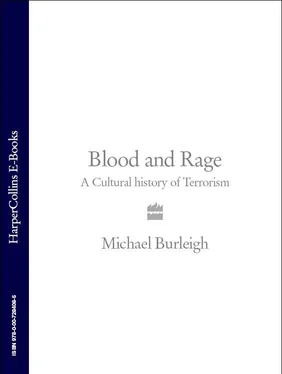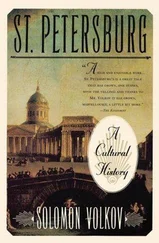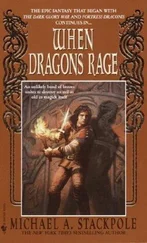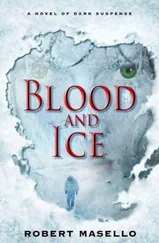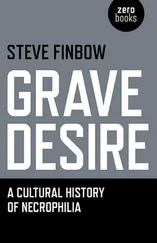Friedrich Engels, whose wife was a Fenian, wrote that ‘The only thing the Fenians lacked were martyrs. They have been provided with these.’ Outrage at the executions was evident in America, Australia, Canada, South Africa and New Zealand, as well as across Europe. In Ireland itself, huge mock funeral processions were held, which suggested that the Catholic hierarchy had modified its earlier condemnations of godless Fenian ‘socialists’ in favour of endorsing the sentimental Irish nationalism often espoused by its priests. The death of Brett was regarded as merely collateral damage in such circles.
The Fenians at large in England resolved to redouble their violence, in anticipation of which they stepped up their arms procurements. Crucial to these endeavours was another Civil War veteran, Ricard O’Sullivan Burke, who had fought from Bull Run to Appomattox, before going on to become a Fenian arms procurer in Birmingham, where as ‘Mr Barry’ or ‘Mr Winslow’ he purchased arms allegedly on behalf of the Chilean government. Burke was identified to Scotland Yard detectives while staying in Bloomsbury in central London. After a scuffle he was arrested together with his confederate Joseph Casey in Woburn Square. Burke was remanded to the Clerkenwell House of Detention, one of two prisons in an area favoured by English artisan radicals, Welsh milk suppliers and many Irish, Italian and Swiss immigrants. The area was known for clock-making and printing, as well as demonstrations on its Green. The House of Detention, which included an exercise yard, was ringed by a wall that was three feet thick at the base and twenty-five feet high. Tenement houses ran parallel with the wall along one side of respectively Corporation Lane and Corporation Row.
Aided by sympathetic female visitors, who included his sister, the imprisoned Burke was in contact with Fenians in London with whom he exchanged messages written in invisible ink. He devised his own escape plan. In the yard he had noticed that the outer wall had been weakened by men repairing pipes buried under the road. The escape bid was led by another Civil War veteran, James Murphy, formerly of the 20th Massachusetts Infantry Regiment, who together with a Fenian from Fermanagh called Michael Barrett misused the proceeds of a collection for a new church to assemble enormous quantities of gunpowder. These purchases alerted the police to what was afoot, although they also had agents within the Fenian conspiracy.
On 12 December 1867 Murphy and two helpers wheeled a tarpaulin-covered barrow through the darkening winter streets of Clerkenwell. Underneath was a thirty-six-gallon kerosene barrel filled with gunpowder. They lobbed a white ball over the wall, the signal for Burke -who was circling the yard on exercise – to halt as if to remove a stone from his boot. Outside, Murphy lit the initiatory fuse, which spluttered and went out. Undertaking one of the most dangerous things to do with gunpowder, whose main drawback as an explosive is that it easily becomes damp, he returned twice more to relight the increasingly short fuse. Eventually the three called it a day and left; inside the walls Burke was returned to his cell.
On Friday the 13th at 3.30 p.m. the barrow and barrel reappeared alongside the prison. Some of the children playing in the street were co-opted into what became a game of fireworks. One of the bombers, dressed in a brown overcoat and black hat, even lit the squib used to ignite the barrel by taking a light from a boy smoking a cigarette. Although a low rather than a high explosive, which creates what experts call a burning event, gunpowder delivers a prolonged and steady propellant push useful for quarrying rocks or expelling projectiles from cannons. When the bomb went off, most of the explosive force hit the tenements opposite rather than the prison wall, although an inverted wedge was blown out of that, sixty feet long at the top and narrower at the wall’s thicker base. The breach in the wall was irrelevant since, as a precautionary measure, the suspicious prison authorities had relocated Burke and Casey to cells in a remote part of the jail. The explosion was heard in suburban Brixton south-east of the Thames, and even, according to a man who wrote to the Standard , some forty miles away. Fifty firemen arrived to pick their way through the rubble, while hundreds of policemen milled around. Guards units took up station in and around the prison. Gas mains were excavated to provide light for rescuers combing through the rubble. Three people were dead, a seven-year-old child called Minnie Abbott, a thirty-six-year-old housewife, Sarah Hodgkinson, and a forty-seven-year-old brass finisher, William Clutton. Terrible injuries were inflicted, many involving fractures to the facial bones, although an eight-year-old girl coming home with a jug of milk sustained terrible lacerations to her knee. An eleven-year-old boy had to have eight fingers amputated. The death toll of local residents rose to twelve over the following weeks, while hundreds more had sustained injuries. Four hundred houses had been damaged. Rumours flew about Fenian plots to blow up the Arsenal at Woolwich, the Tower of London and York Minster. Fifty thousand special constables volunteered to patrol the streets and civil servants went about armed. There was dark talk in the Spectator of the need for bayonets to be deployed, although the magazine had been sympathetic to the demotic nobility of the Fenian uprising in Ireland. More practically, a local clergyman organised a Clerkenwell Explosion Relief Fund that dispensed aid and pensions to the victims and their rescuers. 7
Michael Barrett was caught test-firing a revolver while in Glasgow and brought back to London. He and five others went on trial at the Old Bailey in April 1868. The cases against Ann Justice and John O’Keefe were dismissed by the judge, and the jury went on to acquit three other defendants. Barrett alone was found guilty of murder. He spoke at great length before sentence was passed, disputing the evidence and the witnesses brought against him, one of whom he dismissed as a ‘prince of perverts’. He was sentenced to hang. In another trial, Ricard O’Sullivan Burke was sentenced to fourteen years’ penal servitude. Attempts to reprieve Barrett took place at a time when the authorities in Australia and Canada had hanged Fenians who had shot a renegade Fenian (he had since become a Canadian cabinet minister) and wounded the duke of Edinburgh on a tour of the Antipodes. Barrett was taken out from Newgate prison to be executed on a fine May morning, as people who had rented gallows side seats in the Magpie and Stump for up to £10 sang ‘Champagne Charlie’ or ‘Oh My, I’ve Got to Die’. When Barrett appeared the crowd cheered, with boos and hisses for Calcraft. Barrett died instantly, the last man to be executed in public in England. After an interval of an hour, Calcraft appeared – to shouts of ‘Come on, body snatcher!’ – to cut the corpse down. The bells on St Sepulchre’s rang nine times. A martyr had been born. So had the habit of calling the Irish ‘Micks’, because thenceforth the Fenians (and the Irish Guards) were popularly referred to as the ‘Mick Barretts’.
As Barrett assumed his place in Irish martyrology, the sufferings of some eighty imprisoned Fenians became the stuff of legend and the object of complex calculations on the part of the British authorities who, regardless of party, were pursuing a moderate reform agenda in Ireland, with Disraeli’s Tories emollient towards the Catholic Church, and Gladstone seeking land reform and disestablishment of the Protestant Church of Ireland. The majority of Irish nationalists responded with calls for land reform and Home Rule. At the extreme margins of Irish politics, the Fenian prisoners taxed the dispassionate ingenuity of British statesmen. The need to maintain law and order -ultimately through executions and imprisonment – had to be balanced against the spiral of violence this might unleash, and against the wider political repercussions in Ireland and further afield, especially in the US, where politicians were hungry for the Irish-American vote. Did one treat them as criminals or as political prisoners?
Читать дальше
